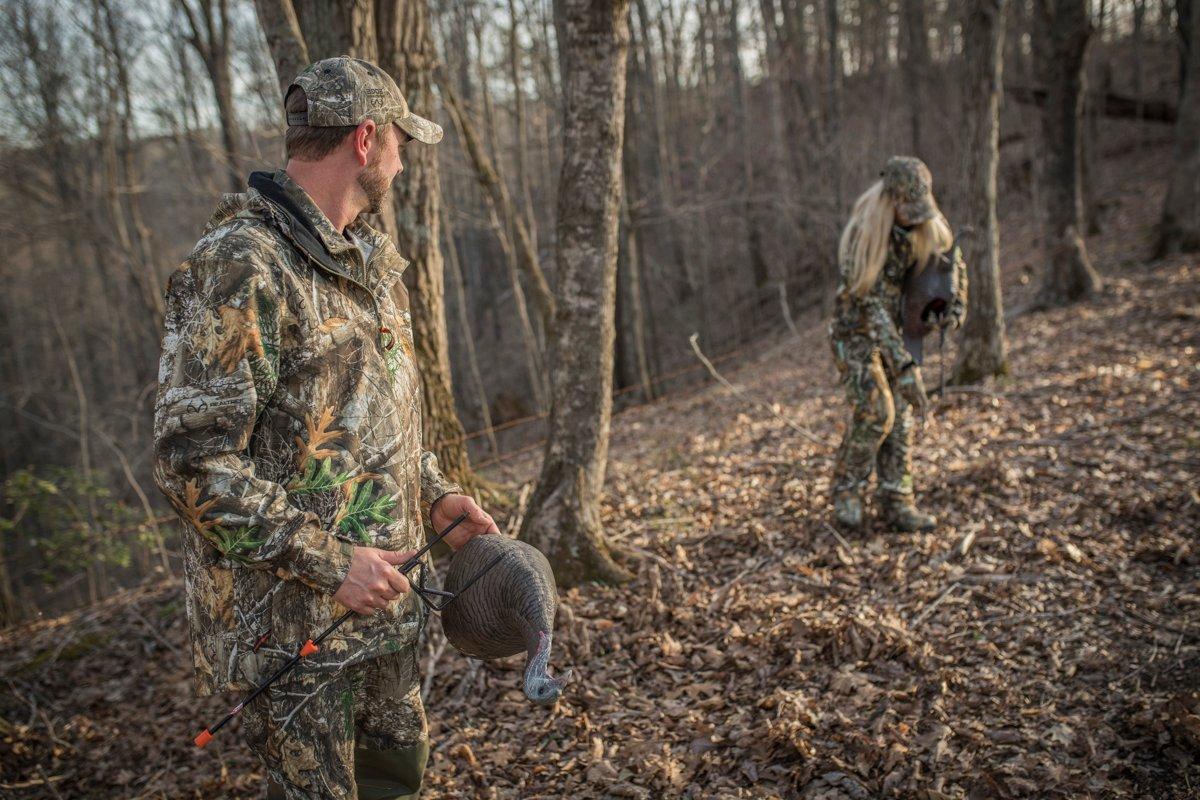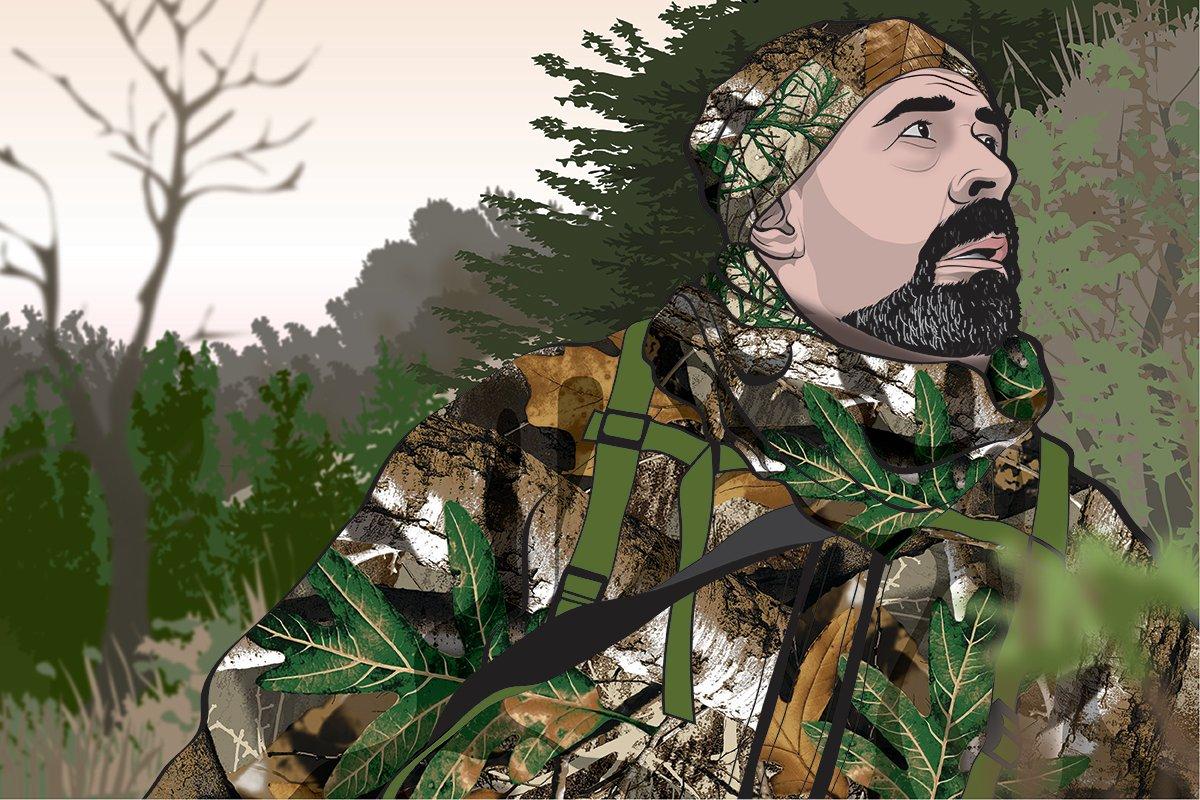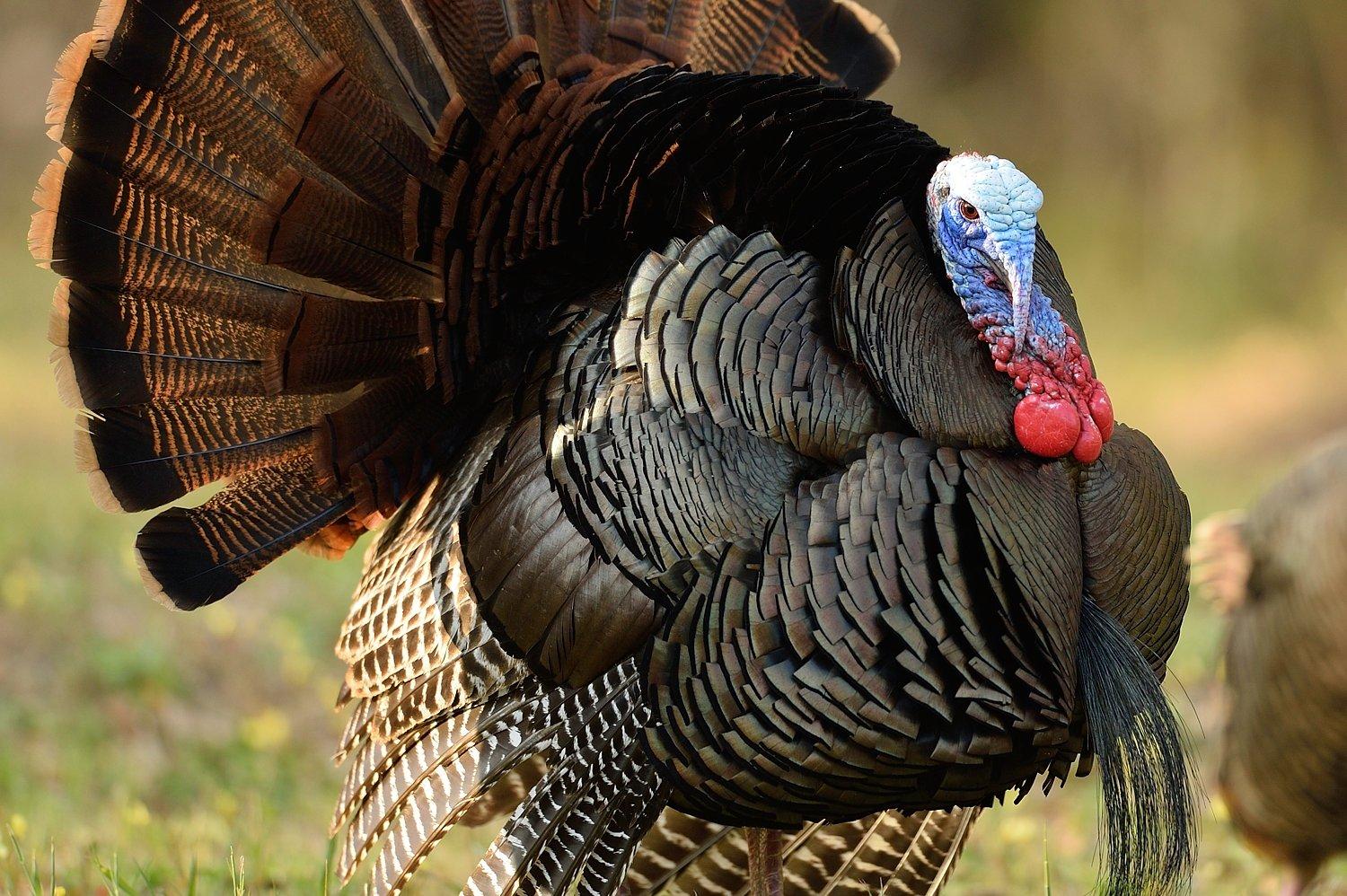Try these tactics on your next stubborn spring gobbler
Some wild turkey gobblers just don't play fair. The most paranoid game bird on the planet might like your expensive fakes one day ... then run from a hen, jake and strutter setup the next. Henned-up longbeards can seem content as college kids on spring break. Hung-up toms strut through your binoculars in the distance. They hammer to your sweet calls, but they sure enough won't come. Time to make your next move.
Leave the Decoys
It's difficult to beat some of the hyper-realistic turkey decoys available today. Still, that doesn't mean all real gobblers approve.
Why do realistic decoys sometimes cause an epic fail? Sometimes it's a matter of the fake not moving. Sometimes it's the positioning of the deke. Sometimes, a full-fan decoy might keep a subordinate bird at a distance. They aren't looking for a fight. The fake has fooled them, but they want no part of it.
As much as you consider yourself a turkey hunter who favors decoys, leave them bagged in your truck for the skeptical gobbler that isn't buying the marketing hype. Other turkeys surely will.
Bring the Decoys
Ever been in a situation where you've called the gobbler in and he's arrived in a field or wooded opening? The turkey looked and studied your position. Seeing no hen, it alarm-putted, flicked its wing and walked the other way.
This is a tactical situation in which you needed at least one fake if not several. The turkey wanted to see a decoy. In an open wooded situation, make your setup where you can kill a turkey the instant it steps out of cover. Put the decoy nearby so the gobbler has a visual reference, and then close the deal.
Bust 'Em Up
It's a gamble, especially for spring hunters who don't understand fall tactics. Scattering, a traditional strategy during autumn hunts, relies on separating flocked turkeys. When scattered, single birds — turkeys with a strong desire to regroup — can be called back to the gun or bow. This approach can be as effective in spring.
If a gobbler's been tough and surrounded by hens, separate them. Scatter them off the roost the night before your hunt — or even the morning of — as false dawn breaks. Try to think tactically. Flush your gobbler to fly in one direction. Scare the hens another way. Set up between them but closer to the gobbler. When he starts firing up, begin calling. You can also call to simply get him to gobble. You'll likely also hear lost yelping around you as hens try to regroup, too.
Learn More: 10 Tips for Turkey Hunting Henned-Up Gobblers
Wait 'Em Out
Do nothing but sit in the woods or on a field edge, watching.
You can get a little frustrated with hung-up, hard-gobbling turkeys that won't come. Waiting patiently is the trick. The gobbler is out there, and so are you. Maybe you've worked a bird in the morning and had him walk off. Maybe you thought it should have come fast — on your watch. Wait, especially if the turkey seemed fired up.
Sometimes, not calling is the best approach, as yelping hard can make a gobbler strut — and keep strutting. So put your calls down. Take a nap. Scratch leaves as the time passes. Cluck now and then. An approaching tom might hear this — the sounds of a hen, it hopes — and come right in after a long drought.
Get On It
Got a hung-up gobbler that won't budge? He's on the ground, but it's much like when a turkey stays limb bound. The bird wants you to go to him.
Sometimes you might have to climb a steep hill. Sometimes, wade a river, then climb to the top of a ridge. This gobbler will make you pay some dues.
Use terrain to your advantage. Run a crow call a time or two to keep a fix on the bird's shock-gobbling position — but don't overdo it. Climb up, slip in, catch your breath and hatch a plan to close the deal.
Then again, if it's clear you're in a stand-off situation — he won't move, and you can't slip closer — do the opposite. Walk in the other direction, softly calling as you ease away. Be the fickle hen. With any luck, the gobbler will panic and move closer. The trick is to remain undetected as you ease back toward the interested turkey.
Got a good position on this bird? Wait him out, as with the roosted tom that won't fly down. There's a fair chance if the gobbler comes, it could be silently. Listen for his footsteps in the leaves — or behind you. The turkey might circle, looking. Stay ready, still as a stone — until you need to shoot.
Double Trouble
You're the yelping hen. That gobbler wants you to come to the strut zone. Play hard to get. Call in one location and then walk away. Better yet, have a buddy do this as you stay in the original spot.
If the gobbler comes closer but not the full distance, slip back in that direction, or wander to one side or the other. That strutter wants action. Acting like you don't might just make him break strut and come to you — or your buddy.
Then again, the gobbler might bust either of you as you move, but that's part of the challenge. For safety's sake, hatch a buddy plan, and stick to it.
Mix It Up
Gobbler beat you twice the same way? Trade up tactics.
Whether we like to admit it, sometimes our turkey hunting strategies are predictably limited. Calling the same way on the same gobbler from the same setup position might be the definition of a stale game plan. Maybe you favor one kind of caller over another. Trade in your mouth diaphragm for a sweet-sounding custom box. Maybe hen yelps won't work. Try raspy three-note gobbler yelps to work on that tom's territorial urges.
Get In Early
If that gobbler has hung up on you for a mind-numbing time, strutting but not coming, think hard about the strut zone the bird has favored. If you know the land well, and especially where the turkey roosts, be there the next morning, right on the edge of it. Chances are it's an open area, say a wooded clear-cut or pasture corner.
Don't know where the turkey sleeps? Watch and listen for the gobbler going to roost at fly-up time or use locator calls to pull a shock gobble from it before flydown. Then again, if you're certain you've nailed the strut zone, simply get in there early and set up. You might not even need to use your calls as he hammers his way to that strutting area.
Shut Up and Wait
Last night's roosted gobbler might be waiting for the talkative daybreak hen you've been imitating to walk to his limb tree. And waiting some more. You each want something different.
As a result, the gobbler won't fly down. You've one option, which basically involves doing nothing. Shut up — especially if your bearded bird is alone. Next, be patient. Sit tight.
If you're behind terrain and unseen but heard by the turkey, rake some leaves with a free hand to imitate a walking bird. He might think it's a hen. Then shut up again and wait, shotgun or bow ready.
Give It a Rest
And if none of these tactics work for you, fishing might prove more successful. Or hiking. Or golf. Maybe you just need to rest these birds for a bit. And catch up on sleep yourself. Sometimes that's the best strategy of all. Before you get back on these tough gobblers.
And one walks right in, just like that.
More Realtree turkey hunting. Follow Realtree on Facebook.










